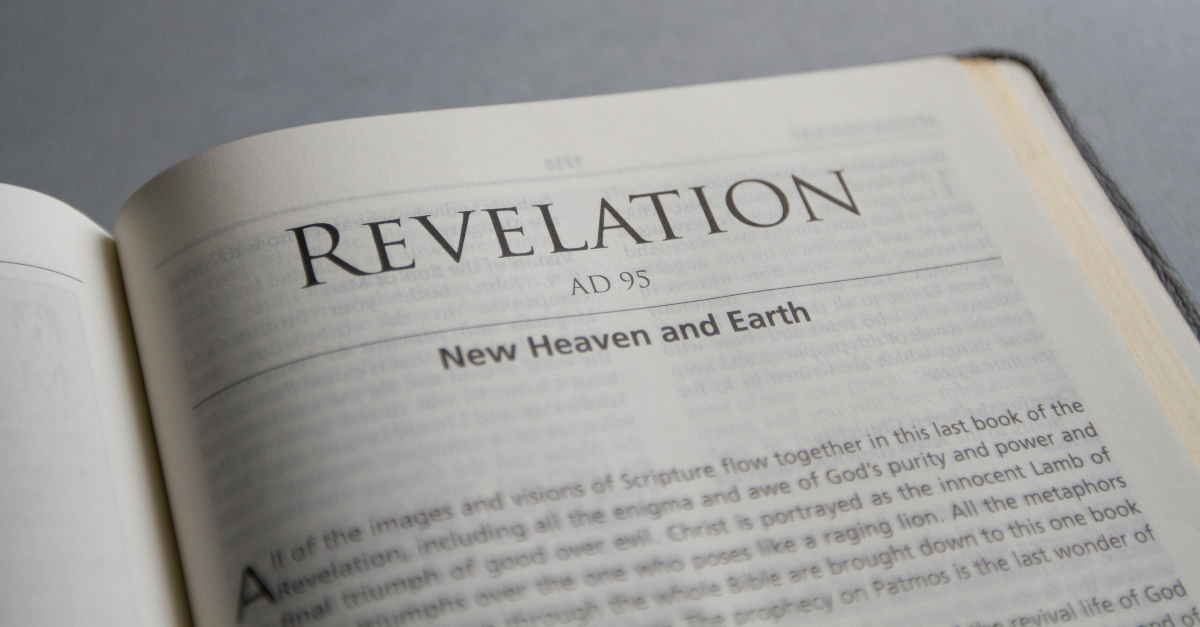A Hopeful Look at the New Jerusalem in Revelation

From the very beginning of creation, it was the Creator’s objective and design to create a place and a people to fill with His presence and glory. His people would work alongside Him and reflect His image as they filled the garden (and eventually, the whole earth) with culture, agriculture, technology, music, art, and commerce...all of which would magnify the Creator (Genesis 1:27-28). Man, however, did not obey or cooperate with God. Adam’s rebellion introduced the curse, corruption, and chaos into God’s good world, but God did not abandon His work.
Before the dust from Adam’s mutiny had settled, God had already enacted a plan to redeem, restore, and move His creation toward its intended conclusion, which was modeled in the garden. God’s commitment to His plan can be seen in countless clues throughout the Old Testament, and when these clues are pieced together, a glorious picture emerges of a future hope. And it is this future, “living hope” (1 Peter 1), which is the steady anchor that tethers us to another world where fear, pain, sin, and death have no place.
Understanding the promise of New Jerusalem is not merely important. It is essential for maintaining a kingdom perspective and developing an unshakable faith in a shaky world.
What Is New Jerusalem in the Bible? How Does it Differ from Jerusalem?
As we are considering what is meant by “The holy city, New Jerusalem, coming down” (Revelation 21:2), we must ask some questions:
How does the rest of God’s story prepare us to understand John’s vision regarding the New Jerusalem?
What is significant about the “newness” of Jerusalem?
And how does what we already know about Jerusalem inform our understanding of the New Jerusalem which is to come?
Jerusalem, though not explicitly referenced, is alluded to in Genesis 14 when Abraham encounters the king and priest, Melchizedek. The Bible identifies Melchizedek as being the king of Salem (Gen. 14:18), which many believe to be a reference to Jerusalem (Ps. 76:2; Heb. 7:2).
There seems to be an expectation that all the following kings would rule from the example of Melchizedek in Jerusalem (Ps. 110:4) with Jesus himself belonging to the “order of Melchizedek” (Heb. 5:5-10). Jerusalem was a sacred and holy city that was intended to be the seat of power of the kings ruling in God’s stead.
But the most important feature of the holy city did not rest in its political value or the presence of the king’s palace. Jerusalem was the most important city in the world because it was home to the temple of God.
The temple was where the very presence of God dwelt and where He would meet with His people through the ministry of the high priest. The temple was where heaven and earth came together again but only temporarily.
Jerusalem was where David brought up the ark of the covenant, which previously had been in the possession of the pagan Philistines, and it was here that the king leaped and danced before the LORD at the ark’s restoration to its rightful place (2 Sam. 6:16). The return of the ark to Jerusalem sparked in David the desire to build YHWH a house (2 Samuel 7) that God might have a proper dwelling place.
Why Must We Read Revelation in Context When Learning about New Jerusalem?
The Book of Revelation can either breathe life-giving hope or strike paralyzing fear into a person, depending on one’s perspective and understanding of John’s vision. Clearly, it is the intention of Christ to bless the one who reads the Revelation (Rev. 1:3), but unfortunately, many readers insist on reading this book through Western eyes rather than through the eyes of John.
Jesus’ revelation to John is not intended to be taken strictly literally, nor is it to be only spiritualized and regarded as mere symbolism. And therein lies the challenge to discern from line to line what is literal and what is symbolic.
The rewards of striking this balance in interpretation are immense and are worth whatever effort is required on the part of the reader.

Significance of the Temple in the Bible and the New Jerusalem in Scripture
The temple of God (and the tabernacle before it) serves as a two-way mirror through which we understand more clearly the purposes of God in His creation. We look into the mirror’s reflection to see the hope that is before us as Abraham did when the Bible says, “he was looking for a city which has foundations, whose architect and builder is God” (Hebrews 11:10).
But the temple also becomes for us a looking glass through which we look back at the Master Builder’s design for the world He made.
Everything about the temple’s design pointed to a greater spiritual reality. The temple and the tabernacle were constructed from a pattern of something that already existed in the heavenly realm (Exodus 26:30) as is clearly shown when the writer of Hebrews elocutes about the glories of the “Majesty in heaven” (Heb. 8:1).
The Hebrew preacher speaks of the tabernacle as being a “copy and shadow of the heavenly things” and references God’s instruction to Moses to “make all things according to the pattern which was shown you on the mountain.” (Hebrews 8:5)

What Is the Garden Temple? Is it in New Jerusalem?
An undeniable case can be made that when God created the Garden of Eden, it too was laid out according to this same heavenly pattern and was to serve as a dwelling place where God would meet with His people as He did with Adam and Eve. It is not an accident that every detail of the tabernacle was reminiscent of the Garden of Eden.
One example can be seen in the veil that was to be crafted that would serve as a divider between the holy place and the holy of holies as Moses was told:
You shall make a veil of blue and purple and scarlet material and fine twisted linen; it shall be made with cherubim... – Exodus 26:31
The very curtain that kept men from entering the presence of God was embroidered with cherubim just like the ones which God placed at the gate of the garden of Eden when man was driven from God’s presence (Genesis 3:24). The tabernacle and the temple alike were stylized gardens that were intended to always point back to the world that the Creator intended to fill with His presence, with His image-bearers by His side.
Sin Enters the Garden Temple
Eden is where God dwells, and the biblical record is clear that the Creator purposes that man dwell with Him, work alongside Him for all of eternity, and obey and enjoy Him forever as we work to bring Him glory. Tragically, sin enters into the world through the rebellion of Adam and leaves no part of God’s good world untouched.
Rather than exalting the Maker as He deserves, man now turns inward in an effort to exalt himself and his own agenda as he seeks to remake the world in his own image for his own glory. Death, disease, war, brokenness, abandonment, and pain now take the place of peace, joy, love, health, and purpose.
Millennia come and go and still, the decay grows more grotesque as those of us made to dwell in God’s presence no longer even recognize the remnants of Eden, which still reside in all of us like vague memories of a fleeting dream.
Sin destroys. Sin kills. Sin shows no mercy.
Jesus Enters the Temple on My Behalf
No other New Testament book speaks more often and more graphically about temple theology than the Book of Hebrews. It is in Hebrews that we read:
This hope we have as an anchor of the soul, a hope both sure and steadfast and one which enters within the veil, where Jesus has entered as a forerunner for us, having become a high priest forever according to the order of Melchizedek. – Hebrews 6:19-20
It is this same Jesus, who we are told, is a “minister in the true sanctuary, which the Lord pitched, not man.” (Hebrews 8:1)
When Jesus hung on the cross outside the city wall in Jerusalem, blood was being sprinkled in the temple at that very moment. Most were oblivious to what truly was transpiring as the blood-drenched body of our Lord was suspended between heaven and earth. But that would soon change with one last labored breath and suddenly the unthinkable occurred as Luke records simply:
And the veil of the temple was torn in two. – Luke 23:45
In Adam, we were driven from God’s garden temple and held at bay by an invisible barrier that we could not break through. In Christ, we are brought near on the merits of our great, High Priest, Jesus Christ (Hebrews 9:11-14).

What Is the New Jerusalem and Temple Like?
God has not scrapped His plan that was first unveiled in Eden. Certainly, sin must be dealt with, but this Christ did on the cross. God has never wavered in His commitment and desire to dwell in the midst of creation with man ruling at His side.
The heavenly glories and realities which the earthly temple foreshadowed will one day overtake us and become the only reality.
This is what John sees in his vision and records for the hope of all who long for Christ’s coming when he says, “I saw the heavenly city, new Jerusalem coming down out of heaven” (Rev. 21:2), and this is the hope we cling to that one day soon “He will dwell” (Rev. 21:3) among his people once again.
The believer’s hope is not grounded in some mystical, ethereal existence away from our earthly home. Our true hope is in the assurance that heaven and earth will again be one, and all things made new again when Jesus comes again to reclaim what is rightfully his.
All things point to this one glorious end when “the Lord God the Almighty and the Lamb are its temple” (Rev. 21:22).
Photo Credit: ©Getty Images/valio84sl
Dr. Rick Kirby, along with his wife and children, lives in Anderson, South Carolina. Rick serves as a corporate chaplain in the upstate of South Carolina, in addition to shepherding micro-church movements, which he does in partnership with the Evangelical Free Church in America and the Creo Collective. Rick has written as a freelance writer for organizations such as The INJOY Group, InTouch Ministries, and Walk Through the Bible. Rick holds a Master of Divinity and Doctor of Ministry degree from Erskine Theological Seminary. Through the years, Rick’s family has been deeply engaged in discipling efforts globally in India, Romania, Brazil, Ecuador and most recently in Puerto Rico. Among the many things Rick enjoys are woodworking in his woodshop and roasting (and drinking) coffee. You can find other works by Kirby at www.rickkirby.org.
This article is part of our larger End Times Resource Library. Learn more about the rapture, the anti-christ, bible prophecy and the tribulation with articles that explain Biblical truths. You do not need to fear or worry about the future!
Battle of Armageddon
Tribulation
Signs of the End Times
The Four Horsemen of the Apocalypse
The Seventh Seal Opened
What Is the Death Angel?
Originally published November 03, 2020.





